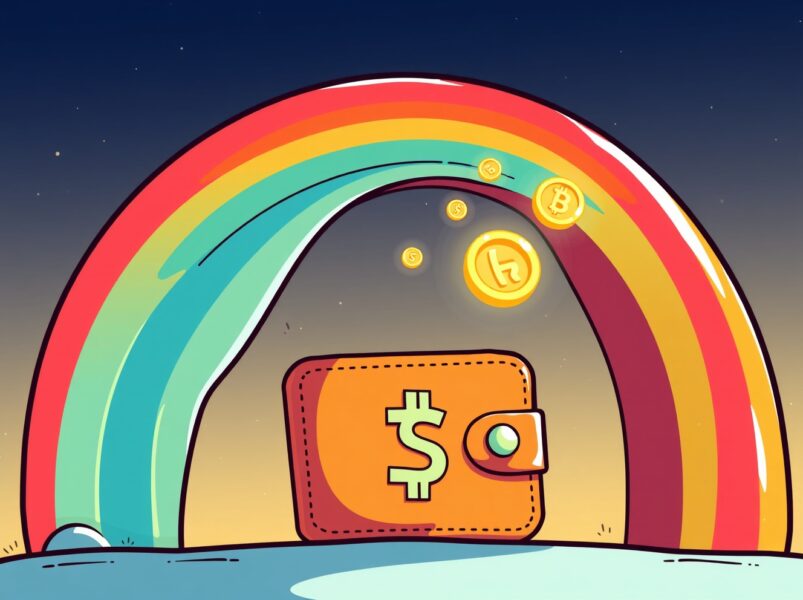The United Arab Emirates enters the operational phase of the OECD framework on crypto: the Ministry of Finance (MOF) has signed the Multilateral Competent Authority Agreement related to the Crypto‑Asset Reporting Framework (CARF) (MOF UAE) and adheres to the standards outlined by the OECD for reporting and automatic exchange of tax information (OECD), while simultaneously initiating a public consultation.
The goal is to ensure greater transparency, traceability, and interoperability with foreign tax authorities.
According to data collected by analysts from our tax desk, between April 2024 and September 2025 we monitored over 30 exchanges that announced or initiated concrete plans to comply with CARF requirements.
Industry analysts observe that most of the technical interventions focus on KYC/TIN collection, balance reconciliation, and implementation of the XML formats required for automatic exchange. As of September 22, 2025, the consultation is open and the contributions collected could influence the implementing acts and technical tests planned in the roadmap.
Agreement Signed and Schedule: What Happens Now
The UAE MOF has signed the multilateral agreement for reporting and, according to the official roadmap, implementation is scheduled for 2027 with the first automatic data exchange planned for 2028.
In this context, the UAE aligns with the OECD standard, already adopted or announced in over 50 jurisdictions; the next step will be to define processes, controls, and technical flows with intermediaries.
CARF Timeline in the Emirates: Key Milestones
- Public consultation: September 15, 2025 – November 8, 2025 (consultation currently open)
- Implementing rules: publication and technical tests in 2026 (expected)
- Domestic go-live: 2027 (data collection and transmission to partners)
- First international exchange: 2028
Why it matters: objectives and scope of the CARF
The CARF introduces the automatic and standardized exchange of tax information on digital assets among participating administrations.
The measure reduces tax arbitrage, strengthens compliance, and provides authorities with a homogeneous framework on volumes, movements, and economic ownership. For local operators, this translates into clear regulatory requirements; taxpayers will be offered greater regulatory certainty, balancing transparency and privacy protection.
Public Consultation: Who Participates and On What
The UAE public consultation, open to exchanges, custodians, brokers, wallet providers, professional traders, and consulting firms, gathers technical and operational contributions until November 8, 2025. That said, the interventions will be crucial to define:
- Scope: perimeter of reporting entities, definitions of crypto-assets, and any exemptions
- Data: field granularity, Tax Identification Number (TIN), and KYC checks
- Processes: onboarding, due diligence, as well as procedures for corrections and adjustments
- Tech: formats, security, and interoperability with foreign systems
The MOF specified that the contributions collected will directly influence the implementing acts and tests with intermediaries, with particular attention to the burdens and implementation costs.
Practical Implications for Exchanges and Users
On the operational front, reporting entities will need to adjust procedures and systems to ensure the collection and transmission of data in a standardized format.
- For exchanges/custodians: collection of name, address, tax jurisdiction, tax code/TIN, date of birth; annual reports on balances, volumes, and equivalent values related to purchases/sales, transfers, and payments in crypto/fiat.
- For users: increased tax traceability of transactions, potential realignment of declarations, and request for TIN and updated documentation.
- Governance: audit trail, quality controls, error management, and adjustments.
- Security: encryption of streams, data segregation, consent management, and respect for privacy.
The applicable sanctions for failure to report, incompleteness, or delays will be defined in subsequent local regulatory acts.
International Scenario and Cooperation
The UAE joins over 50 jurisdictions committed to adopting the OECD CARF (OECD). Countries like New Zealand, Australia, and the Netherlands are taking converging paths for the adoption of this framework.
Switzerland, in fact, has put forward legislative proposals to extend the automatic exchange of crypto data to numerous partners, involving a large part of the G20 members.
Moreover, in Asia, South Korea has intensified enforcement efforts regarding digital asset taxation by collaborating with intermediaries and authorities; information on some measures remains preliminary.
The expected outcome is practical cooperation: more frequent automatic exchanges, aligned formats, and the reduction of gray areas for cross-border operators.
Quick FAQ
How does automatic trading work?
Periodically, the reporting entities send standardized data related to clients and transactions to the local tax authority. This information is then automatically shared with foreign counterparts based on the multilateral agreement.
What data is shared?
Customer tax identifiers, personal information, annual balances, and values of incoming/outgoing transactions, including crypto-to-crypto and crypto-to-fiat transactions, are transmitted in accordance with CARF standards.
Who falls within the perimeter?
Exchanges, custodians, and other intermediaries that facilitate transactions or the holding of crypto-assets for clients. Any cases of exclusion will be defined by local regulatory acts.
When do trades between countries begin?
In the UAE, the framework will be implemented in 2027, with the first international data exchange expected in 2028.
Key Numbers
- Engaged Jurisdictions: 50+
- Partners mentioned from Switzerland: 74
- UAE Consultation: September 15 – November 8, 2025 (consultation open until September 22, 2025)
- UAE go-live: 2027; first exchange: 2028
Transition and Next Steps
In the immediate term, operators are encouraged to map their systems, identify any data gaps, and analyze internal flows in relation to the requirements set by the CARF. Indeed, interoperability tests with MOF channels and specific training plans for compliance and IT teams will follow.
The success of the initiative will depend on adherence to shared technical standards, data quality, and ongoing cooperation between authorities and the industry.
Source: https://en.cryptonomist.ch/2025/09/22/carf-uae-consultation-begins-crypto-data-exchange-from-2028/


